The Costs of Bat Decline
Can we afford to lose bats? A recent study by Eyal Frank of the University of Chicago reveals that the dramatic decline in U.S. bat
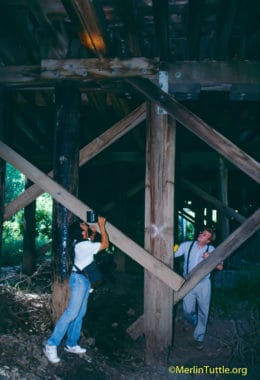
Building bat roosts into highway bridges in farmlands can benefit farmers at little or no cost to taxpayers. Mark Bloschock, a supervising bridge design engineer at the Texas Department of Transportation, discovered the potential for bridges to help bats when he worked on Austin’s now famous Congress Avenue Bridge. As hundreds of thousands of bats unexpectedly moved in, he contacted me for advice. He soon discovered that, by simply making small adjustments in the spacing between box beams, large numbers of bats could be attracted where needed, and where they weren’t wanted, they could be discouraged by simply changing the spacing.
In 1998, when highway US 90 required two new bridges over Seco Creek, near D’Hanis, Texas, he wrote specifications that placed the box beams three quarters to 1.5 inches apart, hoping to attract Brazilian free-tailed bats (Tadarida brasiliensis) to this important agricultural area. The bats quickly moved in and soon exceeded half a million, today as many as two million.
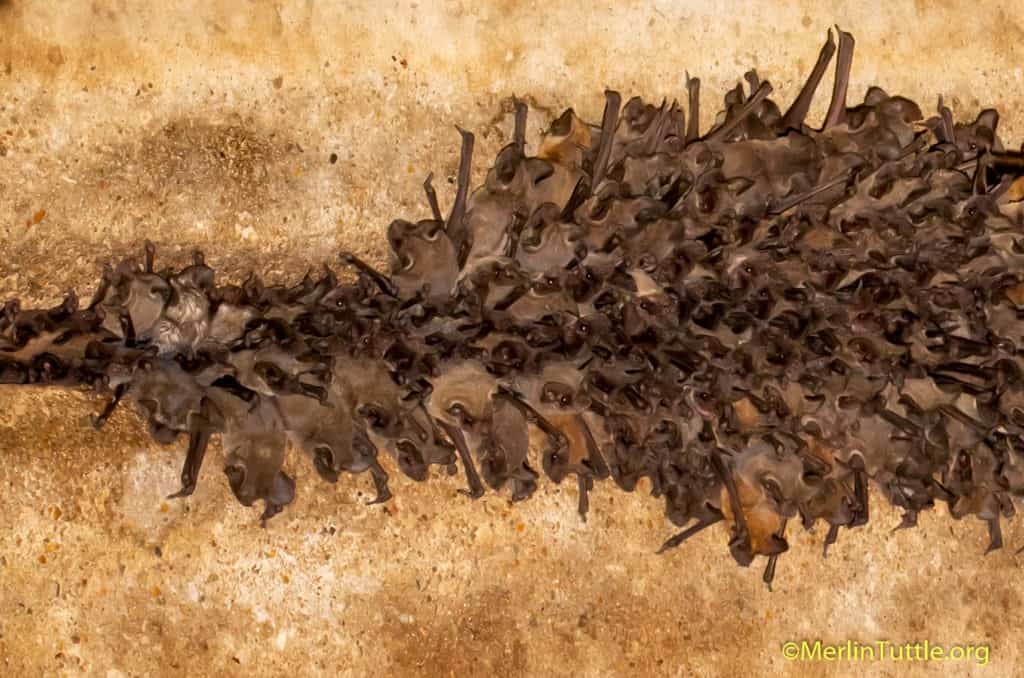
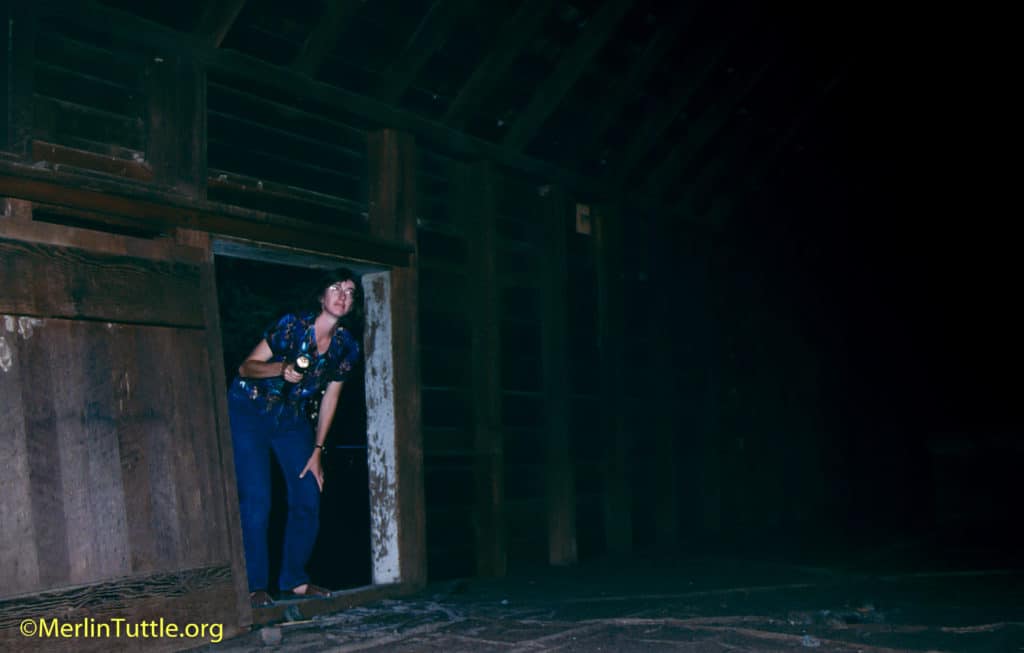
We first learned of Mark’s success when I received a phone call from Rodney Sams, an agricultural consultant specializing in pest management. He explained that he and Joel Curtis, a pecan orchard owner he worked for, were baffled. Their pheromone traps, used to evaluate needs for pesticides, normally held 80 to 100 moths each, but that spring they were down to just a handful. They had seen a large bat emergence from the nearby Seco Creek Bridges and wondered if they were the reason for the dramatic reduction in chemical needs.
I checked with Mark, and he said yes, that was where he had designed bat habitat into a pair of bridges.
Christopher Anderson, a San Antonio Express News writer, interviewed each of us for his story published on April 11, 2000. He reported “Sams strongly believes the voracious insect eaters [bats] are keeping Curtis’ pecans from being assaulted.”
Mark believes that box beam bridges, with suitable spacing, are preferred, not just alternative housing for bats. Luckily for the world of bats, he became a passionate advocate for helping bridge bats help people, and thanks in large measure to his enthusiasm, there are now important bat colonies safely living in bridges from Florida to California.
The latest reported success began in 1996 when David Wyatt and Gregg Erickson, of the California Department of Transportation, and Rachael Long, a farm advisor with the University of California Cooperative Extension Service, invited me to join them to investigate the needs of bats living in old bridges, including those that lived in an old wooden causeway that needed replacement. Thanks to their enthusiasm, Yolo County’s bridge bats now have safe homes in bat-friendly bridges, one of which has become a tourist attraction.
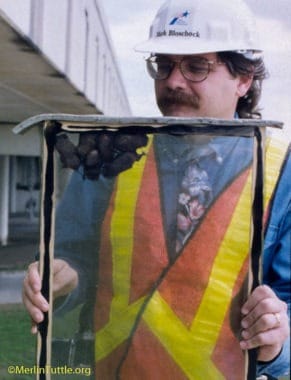
On August 16, 2018 the Atlas Obscura, in its online magazine, published an article titled, Batnadoes Can Protect California’s Crops, Bats are farmers’ new best friends by Anne Ewbank. In the article, local farmer, Mike DeWit swears that the 250,000 free-tailed bats from the Yolo Causeway play an “outsized role” in keeping his wild rice crops pest free. Organic farmers of the region are particularly intrigued, increasingly seeking advice on how to attract bats. For the sake of both bats and humans, we’re hoping the news will spread as each year we learn more about bat values and how to attract them.
We encourage you to send praise and thanks to the author and editor of the Atlas Obscura article by filling out a feedback form. Of course sharing on social media is always a great way to help bats get the positive publicity they deserve. Bats need all the friends they can get!
Here’s a guide to Texas’ best bat watching bridges and Merlin’s photos showing the species that live there.
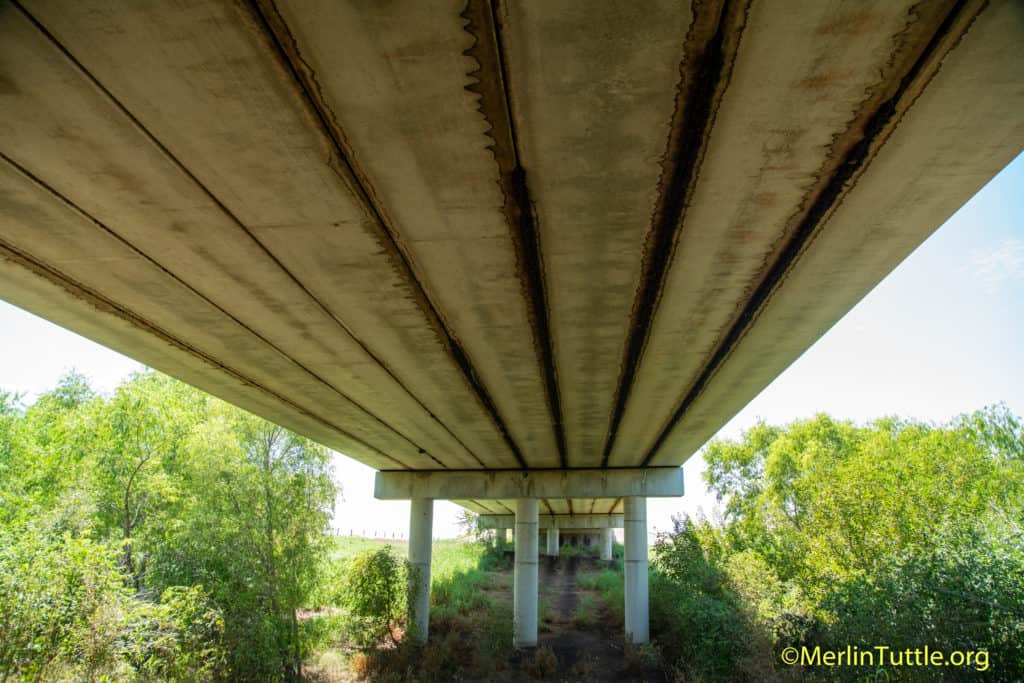
Love our content? Support us by sharing it!
Can we afford to lose bats? A recent study by Eyal Frank of the University of Chicago reveals that the dramatic decline in U.S. bat
Bats are among the most fascinating yet misunderstood creatures in the natural world, and for many conservationists, a single experience can ignite a lifelong passion
Many bat conservationists know that Kasanka National Park in Zambia is an exceptional place for bats, but it is also the place that sparked my
The Kasanka Trust is a non-profit charitable institution, which secures the future of biodiversity in Kasanka National Park in Zambia. They welcome internships for students
2024 © Merlin Tuttle’s Bat Conservation. All rights reserved.
Madelline Mathis has a degree in environmental studies from Rollins College and a passion for wildlife conservation. She is an outstanding nature photographer who has worked extensively with Merlin and other MTBC staff studying and photographing bats in Mozambique, Cuba, Costa Rica, and Texas. Following college graduation, she was employed as an environmental specialist for the Florida Department of Environmental Protection. She subsequently founded the Florida chapter of the International DarkSky Association and currently serves on the board of DarkSky Texas. She also serves on the board of Houston Wilderness and was appointed to the Austin Water Resource Community Planning Task Force.
Michael Lazari Karapetian has over twenty years of investment management experience. He has a degree in business management, is a certified NBA agent, and gained early experience as a money manager for the Bank of America where he established model portfolios for high-net-worth clients. In 2003 he founded Lazari Capital Management, Inc. and Lazari Asset Management, Inc. He is President and CIO of both and manages over a half a billion in assets. In his personal time he champions philanthropic causes. He serves on the board of Moravian College and has a strong affinity for wildlife, both funding and volunteering on behalf of endangered species.